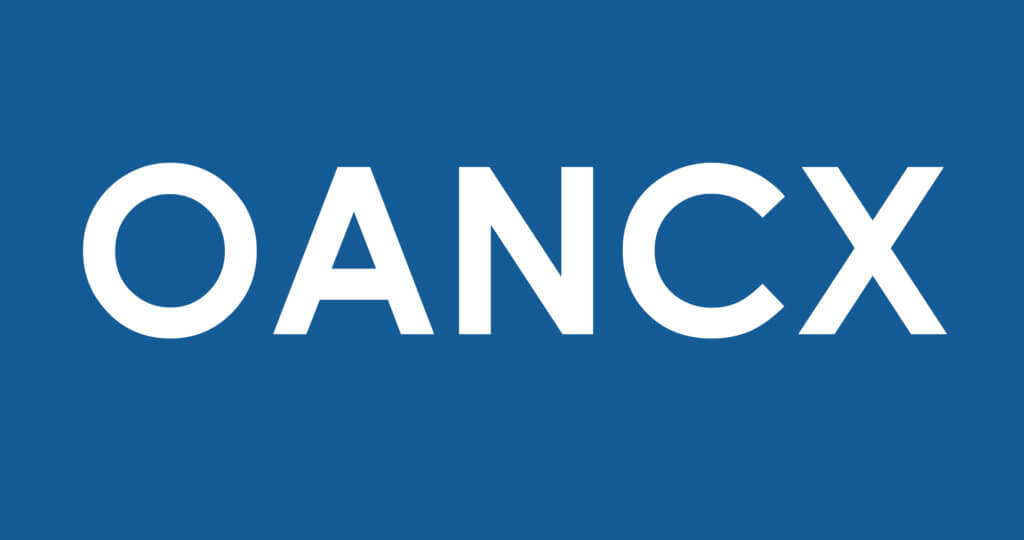Oakmark Equity and Income Fund – Investor Class
Average Annual Total Returns 06/30/21
Since Inception 11/01/95 10.31%
10-year 8.77%
5-year 11.95%
1-year 42.12%
3-month 6.01%
Gross Expense Ratio: 0.86%
Net Expense Ratio: 0.84%
Expense ratios are based on estimated amounts for the current fiscal year; actual expenses may vary.
The net expense ratio reflects a contractual advisory fee waiver agreement through January 27, 2022.
Past performance is no guarantee of future results. The performance data quoted represents past performance. Current performance may be lower or higher than the performance data quoted. The investment return and principal value vary so that an investor’s shares when redeemed may be worth more or less than the original cost. To obtain the most recent month-end performance data, view it here.
With over half the U.S. population vaccinated and the number of daily Covid-19 cases dropping dramatically, life has started to return to normal in the U.S. Restaurants are packed once again and it is nearly impossible to get a reservation at many popular places. Airline travel is nearing 2019 levels and vacation travel is booming. This is especially obvious to anyone who has tried to find a hotel room this summer. Most professional sports teams are now playing before nearly full crowds. Workers are returning to the office and our daily Chicago commute gets longer by the day. While we welcome this return to normalcy, the relatively rapid pace of this reopening has led to some economic stresses. The most apparent is inflation. This is clear to anyone who has tried to buy a home or rent a car recently. Last month, the core inflation rate was 5%, the highest in nearly 30 years.
Being a balanced fund, we pay close attention to inflation. The reason is that historically bond prices and inflation are inversely correlated. With the price of nearly everything going up, many investors, including us, assumed Treasury yields would increase. While Treasury yields have increased from the historically low levels during the onset of the pandemic, the 10-year Treasury yield is currently around 1.5% after peaking at around 1.75% in April. It is striking how much lower the yield on a 10-year Treasury is than current core inflation. Negative real yields are a rarity and the current 10-year Treasury yield is at a record low versus core inflation.
There are many reasons offered for this disconnect between Treasury yields and inflation. Most center on the tremendous amount of liquidity being pumped into the economy. This has caused consumers, banks and money market funds to be flush with cash and has created buyers of Treasurys across the yield curve. This demand is not only limited to U.S. institutions; many foreign governments have also been buying Treasury securities. Pension funds are also allocating more funds toward fixed income as the huge rally in equities has left many plans fully funded. The Federal Reserve has also been aggressively buying Treasurys to suppress yields and promote economic activity.
Another explanation for the low Treasury interest rates is that the market views the currently elevated levels of inflation as transitory. Demand has rebounded faster than the labor markets and supply chains can react, but over time the bottlenecks are expected to lessen and prices to moderate. The Federal Reserve tracks inflation expectations closely and has targeted 2% inflation since 2012. While inflation expectations cannot be observed directly, one measure favored by the Fed is the index of common inflation expectations, which takes information from various surveys and produces an estimate for inflation expectations. The latest reading was around 2%. In an economic commentary piece by the Federal Reserve Bank of Cleveland, they used the published components of the CPI to compute two sub-indexes, a sticky-price composite and a flexible-price composite. Flexible prices are those heavily influenced by economic activity and that can change relatively quickly, such as food, motor fuel and cars. Sticky prices change much more slowly and are thought to be more heavily influenced by future inflation expectations. Sticky prices include things such as medical costs, education costs, and water and trash collection. Flexible prices were up 3.3% over the past 12 months (ending in March), but sticky prices rose only 1.8%. With both the index of common inflation expectations and the sticky prices being well below current inflation, the currently elevated levels of inflation may in fact be transitory. The Federal Reserve will watch inflation expectations closely. Even though inflation expectations have remained subdued since the Fed set its target in 2012, a period of robust inflation could cause a sudden change in inflation expectations, which may prove difficult to tamp down.
So what does all this mean for how we manage the Equity and Income Fund? We believe that the currently elevated inflation data is likely transitory and that, over the next year, inflation will settle in the 2% range. We also believe that the demand for Treasury securities should decrease as loan demand increases and the banks start lending out some of their excess liquidity. Treasury demand will also decline as the Federal Reserve starts to taper and then eventually stops its purchases of Treasury securities. We expect the Fed to start raising the fed fund rate by 2023 at the latest. The combination of these events should lead to higher interest rates, with the fed funds rate approximating inflation and the rest of the curve having a gentle upward slope. Given that we believe interest rates will increase, we have kept a short duration for the fixed income portion of the fund.
Quarter Review and Transaction Activity
The Oakmark Equity and Income Fund increased 6.0% in the second quarter, compared to a 3.1% increase for the Lipper Balanced Fund Index. For the year, the Fund is up 16.9%, compared to an 8.7% gain for the Lipper Index. Since inception in 1995, the Fund’s compounded annual rate of return is 10.3%, while the Lipper Index’s return is 7.5%. The Fund’s return since inception is also ahead of the S&P 500, which is up 10.2% over this time. Frequent readers of the Fund’s quarterly commentary will see that our near-term performance has rebounded meaningfully compared to the past several years. This is, in part, a function of the recovery of value stocks. We have written extensively about the performance gap between value and growth stocks. Although we welcome the value stock recovery, we believe it still has further to go, so while we have sold or trimmed some of the stock positons in the Fund, we believe that on average our equity holdings trade at a significant discount to intrinsic value.
The Fund ended the quarter with a weighting of 64% equities and 36% fixed income/cash. The weighting in equities is down from 68% last quarter. Due to strong short-term equity performance, several stocks approached or reached our sell targets, so we reduced or sold those positions. Stocks we eliminated this quarter included Agilent, Diageo, Gaming and Leisure Property, Mastercard, and UnitedHealth Group. Mastercard and UnitedHealth were tremendous winners for the Fund, up sixteenfold and tenfold, respectively, from the initial purchase price. Although we reduced our equity holding percentage, we still view equities as relatively more attractive than fixed income, which explains why we are overweight in equities compared to the 60%/40% weighting that we consider neutral. On the fixed income side, we have maintained our short duration stance as we believe it is likely that interest rates will eventually increase. We have also maintained our higher weighting to corporate bonds versus Treasurys as we believe there is still some spread opportunity left in well-researched corporate bonds. This spread opportunity has narrowed as the economy has recovered, and we are mindful that on average spreads are near historic lows.
The largest contributors to the portfolio’s return in the quarter were Alphabet, CVS Health, Charter Communications, PDC Energy and Philip Morris. The largest detractors were Thor Industries, Reinsurance Group of America, Fiserv, Lear and Citigroup. Only Thor and Fiserv were down more than 10% for the quarter. It is interesting that the group of contributors is well diversified among sectors. This is somewhat different than prior quarters where everything seemed to be well correlated and entire sectors dominated the contributor and detractor categories. We did not add any new positions in the quarter as we added six new positions in the previous two quarters.
We would like to thank our fellow shareholders for their investment in the Fund and welcome any questions or comments.
The securities mentioned above comprise the following preliminary percentages of the Oakmark Equity and Income Fund’s total net assets as of 06/30/21: Agilent 0%, Alphabet Cl A 5.7%, Charter Communications Cl A 2.6%, Citigroup 2.2%, CVS Health 3.7%, Diageo 0%, Fiserv 0.5%, Gaming and Leisure Property 0%, Lear 1.8%, Mastercard 0%, PDC Energy 1.4%, Philip Morris Intl 3.0%, Reinsurance Group 1.6%, Thor Industries 1.1% and UnitedHealth Group 0%. Portfolio holdings are subject to change without notice and are not intended as recommendations of individual stocks.
The Lipper Balanced Fund Index measures the equal-weighted performance of the 30 largest U.S. balanced funds as defined by Lipper. This index is unmanaged and investors cannot invest directly in this index.
The S&P 500 Total Return Index is a float-adjusted, capitalization-weighted index of 500 U.S. large-capitalization stocks representing all major industries. It is a widely recognized index of broad, U.S. equity market performance. Returns reflect the reinvestment of dividends. This index is unmanaged and investors cannot invest directly in this index.
The S&P 500 Shiller CAPE Ratio, also known as the Cyclically Adjusted Price-Earnings ratio, is defined as the ratio the S&P 500’s current price divided by the 10-year moving average of inflation-adjusted earnings.
The Fund invests in medium- and lower-quality debt securities that have higher yield potential but present greater investment and credit risk than higher-quality securities, which may result in greater share price volatility. An economic downturn could severely disrupt the market in medium or lower grade debt securities and adversely affect the value of outstanding bonds and the ability of the issuers to repay principal and interest.
The Oakmark Equity and Income Fund’s portfolio tends to be invested in a relatively small number of stocks. As a result, the appreciation or depreciation of any one security held by the Fund will have a greater impact on the Fund’s net asset value than it would if the Fund invested in a larger number of securities. Although that strategy has the potential to generate attractive returns over time, it also increases the Fund’s volatility.
The information, data, analyses, and opinions presented herein (including current investment themes, the portfolio managers’ research and investment process, and portfolio characteristics) are for informational purposes only and represent the investments and views of the portfolio managers and Harris Associates L.P. as of the date written and are subject to change and may change based on market and other conditions and without notice. This content is not a recommendation of or an offer to buy or sell a security and is not warranted to be correct, complete or accurate.
Certain comments herein are based on current expectations and are considered “forward-looking statements”. These forward looking statements reflect assumptions and analyses made by the portfolio managers and Harris Associates L.P. based on their experience and perception of historical trends, current conditions, expected future developments, and other factors they believe are relevant. Actual future results are subject to a number of investment and other risks and may prove to be different from expectations. Readers are cautioned not to place undue reliance on the forward-looking statements.
All information provided is as of 06/30/2021 unless otherwise specified.








